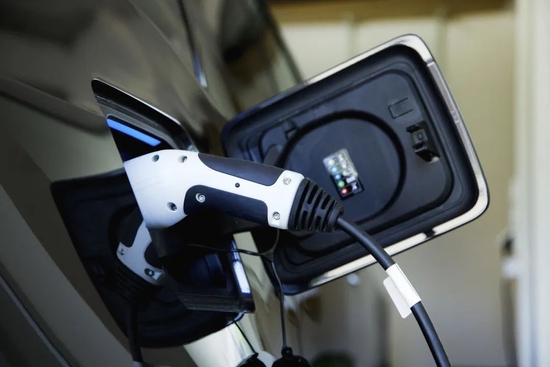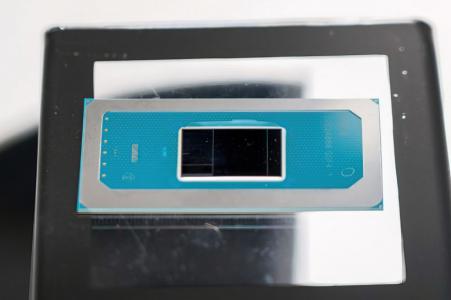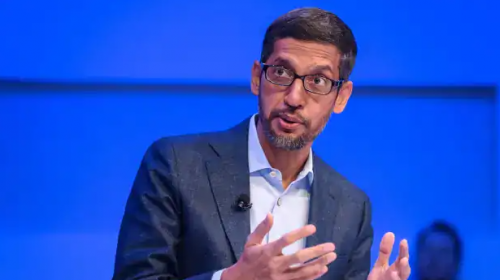your current location is:Home > carHomecar
Super fast charging is rolling up, but it is still difficult to replace fuel vehicles

Source: 36氪
Text / Peng Suping
Editor/ Li Qin
"Charging for 5 minutes, the battery life is 200 kilometers".
Almost two years ago, this was an unimaginable capability of electric vehicles, but today, this selling point has been frequently featured on the posters of a large number of car companies such as Xiaopeng Motors, GAC Aian, Li Auto, and BYD.
In mid-August, the Xpeng S4 ultra-fast charging pile was launched for the first time. The company said that the Xpeng G9, which was launched in September this year, can achieve "5 minutes of charging and 200+ kilometers of battery life". In addition, GAC Aeon 2023 AION V Plus, Extreme Fox Alpha S Huawei HI version, etc. are all involved in the field of ultra-fast charging.
what happened? The principle of electric vehicle battery charging is not complicated. It is like a water storage tank. The higher the water pressure, the shorter the time for full water storage. Insulation and the carrying capacity of batteries are both technical mountains to be overcome. As for new energy vehicles, the voltage platform has been boosted from 400V to 800V, and the capabilities of fast-charging batteries and other components have also begun to mature.
The fatal shortcoming of electric vehicles is the efficiency of energy replenishment. If it can achieve 200 kilometers of battery life in 5 minutes, it will undoubtedly greatly narrow the gap with the efficiency of gasoline filling. The helm of Xiaopeng Motors also said, "We will replace fuel vehicles below 100,000 yuan with ultra-fast charging."
But this seems to be too early to say. High-voltage fast charging is not a single-point technical proposition. Although the car-end parts and components are becoming more complete, the laying of charging facilities, the sharp increase in vehicle costs, and the support of the State Grid are all A barrier on the road to supercharge popularization.
The automotive industry chain has never been achieved overnight. The power battery industry, which is advancing by leaps and bounds, is still mired in the quagmire of raw material shortages. Energy supplementation is an industrialized landing project that is linked one by one.
High cost of overcharged models
It's too early to talk about disruption. Although BYD, Jikr, Lantu, Changan Automobile, Great Wall Motor and many other car companies have officially announced the establishment of 800V high-voltage platforms, at this stage, there are not many ultra-fast charging models that have actually landed or are close to landing.
In addition to the earlier Tesla models and Porsche Taycan, they are basically the Polar Fox Alpha S, Aion AION V Plus, Xiaopeng G9, etc. mentioned above. Even for these models, only individual versions can achieve ultra-fast charging. .
Taking the just-launched AION V Plus as an example, only the "extremely fast charging version" of the car can be charged from 30% to 80% in 5 minutes on a specific supercharger. The Xpeng G9 is also in a similar situation. Only the high-end version can charge 200 kilometers in 5 minutes, and the other version of the ultra-fast charging version can add 130 kilometers in 5 minutes.
The charging experience of "going in 5 minutes" is close to that of fuel vehicles. Why don't all car companies expand and promote them? The constraint is cost.
The ultra-fast charging technology that is ahead of the market, first of all, the battery performance must be maximized. Although the industry has used a number of technical routes to improve the charging and discharging rate of the battery, it has also overcome technical problems such as battery heat dissipation and insulation in ultra-fast charging. Battery costs are also high. An industry research report shows that the cost of ultra-fast rechargeable batteries will increase by 5%, which is still the level after scale.
Secondly, in order to improve the charging power, the industry mostly adopts the 800V high-voltage technical route. Compared with the high-current route that Tesla insists on, the pressure of battery thermal management under the 800V platform is slightly smaller, but the challenge is that it will involve the whole vehicle system architecture. This will put higher requirements on many vehicle parts and components, and will also increase the cost of R&D, design and production.
A well-known example is power semiconductors. In the currently commonly used 400V platform, conventional silicon-based IGBTs can meet the needs, but after upgrading to the 800V platform, the hardware withstand voltage level and switching loss requirements are improved, and silicon carbide MOSFETs have become a more cost-effective choice.
But at the moment, the cost advantage of SiC MOSFETs has not fully emerged. Yang Chengjin, chairman of Senguoke, who is engaged in SiC power devices, said in an interview with the media recently that, in general, the cost of using SiC MOSFETs will increase by about 50% compared to using IGBTs. 10% - mainly because the scale has not come up.
Under the collective action of new materials, new processes and new components, the cost of ultra-fast charging models remains high. "800V is basically a high-end car of more than 300,000 yuan, and the national car of 100,000 yuan cannot cover this cost." Tong Zongqi, director of the Information Department of the China Electric Vehicle Charging Infrastructure Promotion Alliance, told 36氪 that this will lead to, at least in the In the short term, ultra-fast charging models cannot be popularized, and will only be "the enjoyment of a few people".
Also taking AION V Plus as an example, when the capacity of the power battery is similar, the price of the "extremely fast charging version" is 60,000 more than that of the "super fast charging version" - for a total price range of around 200,000 yuan For the model, this is not a small amount.
What is the cost-effectiveness of ultra-fast charging, there is still a question mark. Porsche's Taycan can absorb the increased cost of the 800V platform with a higher positioning, but this approach is too risky for a high-volume model.
Consumers are willing to pay a limited premium for ordinary brands, which is one of the reasons why car companies such as Aian will only launch high-voltage ultra-fast charging models on a small scale. The market is still in the period of building awareness. , even if it can't be an instant hit, it won't let the entire model hit the street.
Ultra-fast charging piles have not yet been rolled out on a large scale
In addition to the extremely small scale of vehicles, another challenge of ultra-fast charging is that the charging infrastructure is seriously insufficient.
Only when the pile and the car are upgraded synchronously can ultra-fast charging be truly realized. Taking Xiaopeng G9 as an example, the peak charging power of the car is 400kW, and the maximum power of S4 single pile can reach 480kW. Only by matching the two can achieve the advertised "5 minutes of charging, 200 kilometers of battery life", and now the maximum power of ordinary fast charging piles Only about 120kW, even if it is fully used, the charging efficiency of the G9 will be greatly reduced.
The piles and stations that can match the ultra-fast charging models are currently mainly deployed and operated by car companies. They have just started, and it is better than nothing. Judging from several brands that have released super-fast charging models, Jihu has put into operation 12 super-charging stations in Beijing, Shanghai, Suzhou and other places, while Aeon landed its first super-charging and swapping center in Guangzhou in April this year. (There is no more public information yet), Xiaopeng only established the first pile of S4 in mid-August.
Supercharging stations and supercharging piles are the key for car companies to build a closed loop of energy supplementation, otherwise the advantages of 800V high-voltage platform models will not be reflected. However, in the early stage of commercialization, few third-party operators will end the layout, and the predicament of the early stage of electric vehicle promotion reappears - the scale of the car is too small, and the operator does not have enough power to lay the piles. In the "chicken or egg first" "In the tangle, car companies can only end in person, just like Tesla who fought alone a few years ago.
Several car companies betting on the ultra-fast charging route have plans to vigorously invest in the construction of ultra-fast charging stations. Xiaopeng said that it will prioritize the construction of next-generation supercharger stations in the 10 cities with the highest G9 orders. He Xiaopeng said that the construction of Xiaopeng's charging piles will be dominated by ultra-fast charging piles, and a "considerable part" will be completed in the next two years. The medium-term plan is to build 2,000 super-charging stations by 2025.
But the construction and operation of ultra-fast charging stations is not easy.
The first is high cost. Although He Xiaopeng once said that after self-developed and self-made, the comprehensive laying cost of S4 piles will be basically the same as the previous fast-charging piles, but this obviously needs to meet many preconditions, such as self-developed and self-made, such as the amount reaching a certain scale. According to industry insiders, the cost of ultra-fast charging piles suitable for 800V may be three times higher, even with state subsidies, there is no advantage, and the follow-up maintenance costs will be higher.
In addition to cost, the construction of ultra-fast charging stations is also constrained by external factors. Shen Hui, chairman of WM Motor, once mentioned that supercharging stations adapted to 800V high-voltage fast charging require matching of super-large capacitors, and the strength and speed of capacitor transformation in the power grid directly determines the penetration rate.
Electricity, like water flow, is not easy to store, and power distribution needs to be transmitted in real time in the power cable channel. General electricity consumption can be covered by conventional facilities, but overcharging stations may bring about short-term electricity consumption peaks, which requires more , more efficient cable channels and other supporting facilities support, this is another set of projects.
Therefore, the industry generally believes that ultra-fast charging stations need to be built and used together with energy storage. Energy storage means storing electricity, and “peak shaving and valley filling” can be achieved in electricity consumption: making full use of electricity during valley hours to supplement demand during peak hours. In this way, the requirements for capacitors are reduced, but energy storage is another cost, which also brings more unknowns to the operation of ultra-fast charging stations.
From this point of view, GAC's integrated super charging and battery swapping center is a more forward-looking layout, while the swapping station built by NIO is equipped with multiple batteries and naturally has energy storage properties. There will be a better foundation.
However, Xiaopeng did not store energy on the ultra-fast charging station. Xiaopeng chose an easier way to land. Although the maximum power of its supercharger can reach 480kW, it chose to control the power of the entire supercharger to only 480kW. In this way, users have the opportunity to enjoy the fastest charging experience (when only one car is charging), and the resistance of Xiaopeng to build a station is relatively small - although 480kW is already considered a relatively large power, it is practical to land on the ground. Yes, it can be referred to that the total power of Weilai power station has reached 550kW, and now more than 1,000 stations have been deployed nationwide.
It can be seen that at the current stage, Xiaopeng still focuses on "uploading". After building more ultra-fast charging stations, even if it cannot exert the maximum effect, it can significantly improve the charging experience of current car owners. According to Xiaopeng's layout, there are 4 piles in one station, so that the single-pile power of the S4 pile can reach 120kW. Now the fast charging on the market is generally only 120kW, and it is still two guns together.
For car companies, the energy supplement system, including ultra-fast charging, is itself an added value outside of car products. At the decisive juncture of winning more stock fuel car owners, each car company must come up with its own optimal solution and promote it as soon as possible. Whether it is an ultra-fast charging station or a power station, it is a thankless project, but as long as it can win the market, Xiaopeng and Weilai have to do it.
related articles
Article Comments (0)
- This article has not received comments yet, hurry up and grab the first frame~












